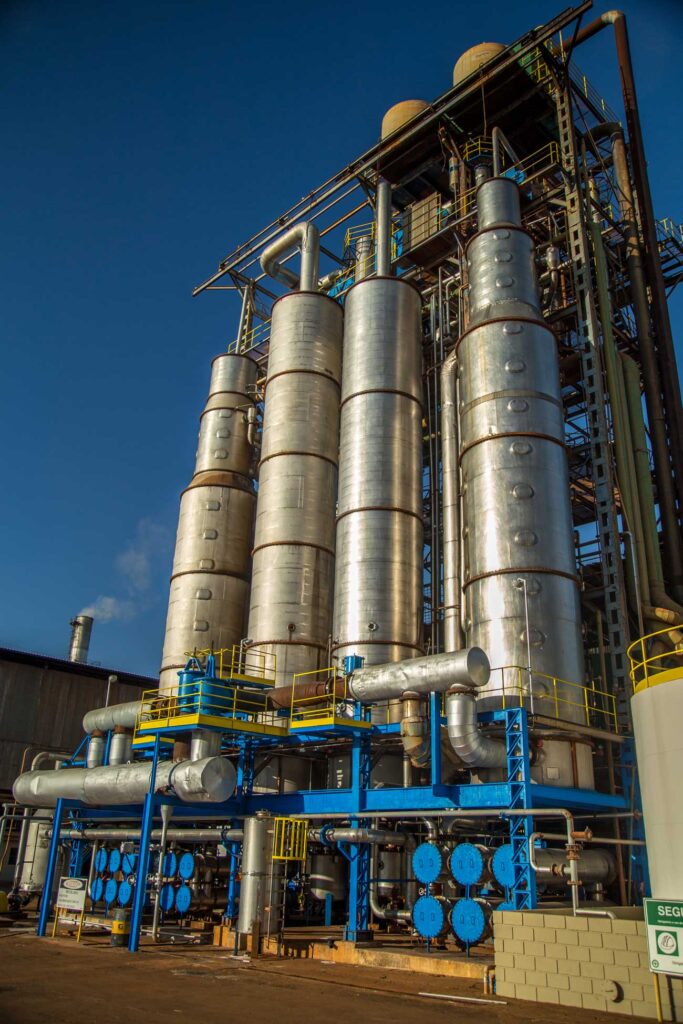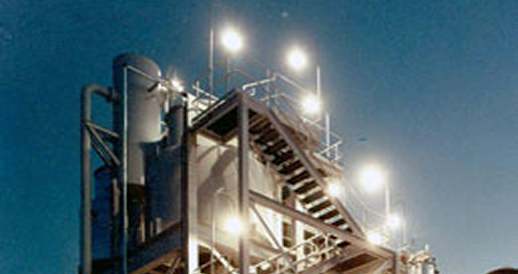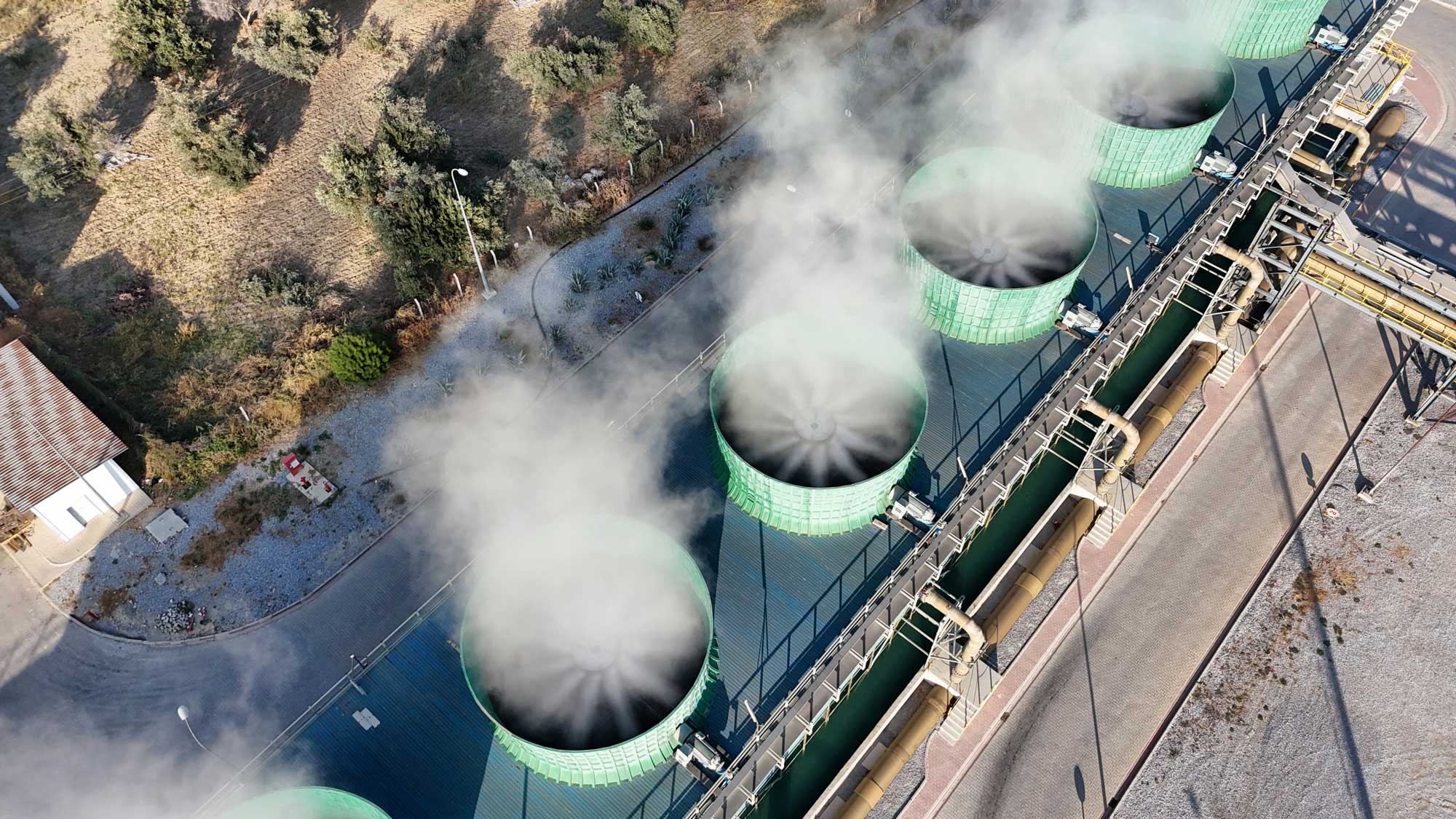Industrial Evaporators & ZLD Guide
The treatment of wastewater and recovery of valuable resources are no longer optional extras in today’s industrial landscape—they are operational imperatives. Increasing regulatory pressures, rising disposal costs, and the demand for sustainable practices are driving industries toward Zero Liquid Discharge (ZLD) strategies. At the heart of ZLD are industrial evaporators, systems that concentrate solutions, recover clean water, and prepare streams for crystallization.
Whiting Equipment Canada Inc., through its licensee Swenson Technology, has decades of experience in designing evaporation and crystallization systems that withstand the harshest environments. Our solutions are engineered to handle challenging impurity profiles, reduce operating costs, and deliver high-purity outputs for industries ranging from lithium production to fertilizers and chemical processing.
This guide explores the fundamentals of evaporation, the key evaporator types, and the engineering considerations that make these systems critical for wastewater treatment and ZLD applications.
Evaporation Fundamentals
Evaporation is a thermal separation process in which a liquid solvent is boiled off as vapor, leaving behind a concentrated solution or crystallized solid. In wastewater treatment and ZLD applications, the goal is twofold:
- Recover as much clean water as possible.
- Concentrate salts, metals, and other contaminants for further processing or safe disposal.
For industries such as battery-grade lithium refining, this principle has already been proven. Lithium must be isolated from brines or ores, with impurities meticulously removed to meet strict purity specifications. Evaporation enables that separation by concentrating valuable solutes and rejecting contaminants.
Our systems take this a step further with careful modeling of thermodynamics and chemical behavior. By understanding how each solution behaves under heat, engineers can design evaporators that maximize efficiency while minimizing scaling, fouling, and unnecessary energy consumption.

Evaporator Types (Falling-Film, FC, Rising-Film, Plate)
Selecting the appropriate evaporator type depends on the feedwater composition, operating conditions, and recovery objectives. Swenson’s pilot testing facilities allow clients to test these technologies under real-world conditions before scaling up.
Falling-Film Evaporators
In a falling-film design, liquid is distributed as a thin film down the inner walls of vertical tubes. This geometry ensures excellent heat transfer and short residence times, making it ideal for heat-sensitive liquids. Falling-film units are often chosen for wastewater streams with moderate scaling potential and industries requiring efficient, continuous operation.
Forced-Circulation (FC) Evaporators
FC evaporators utilize high-velocity pumps to circulate the solution through a heat exchanger, thereby preventing solids from settling and significantly reducing fouling. This makes them a go-to choice for high-solids, high-TDS brines, including lithium brines and chemical waste streams where scaling is a constant threat. Their robust design allows them to operate reliably even in the harshest environments.
Rising-Film Evaporators
These systems rely on vapor lift to move the liquid upward inside heated tubes, creating a thin film as the liquid boils. Rising-film units are generally applied to low-viscosity fluids with lower scaling potential.
Plate Evaporators
The compact footprint of plate evaporators makes them ideal for facilities with limited space. They are often chosen for moderate-fouling liquids and applications requiring easy access for cleaning.
Together, these evaporator types give operators a toolbox of solutions to match wastewater characteristics, throughput requirements, and integration needs for ZLD.
Multi-Effect vs MVR
Energy consumption is one of the most significant cost drivers for evaporation. To address this, engineers deploy either multi-effect evaporators or mechanical vapor recompression (MVR) systems.
Multi-effect designs reuse vapor from one stage as the heating medium for the next, dramatically reducing steam requirements. The trade-off is higher system complexity and footprint.
MVR systems, by contrast, mechanically recompress vapor with a fan or compressor and recycle it as heating energy. This approach can nearly eliminate external steam demand, making it one of the most energy-efficient options for evaporation available.
When to Choose MVR
MVR is especially compelling in:
- Regions with high fuel or steam costs.
- Projects where electricity is cheap or renewable.
- ZLD plants aiming for the lowest possible operating expenses.
However, MVR units come with higher upfront costs and may not be suitable for every feedwater type, especially those with severe scaling tendencies that could impair compressors.
Materials for High-Chloride/High-TDS
One of the toughest challenges in wastewater and ZLD evaporation is corrosion and scaling from high-chloride and high-TDS streams.
Whiting brings decades of experience in engineering equipment for aggressive environments:
- Robust Construction: Similar to their metallurgical equipment, evaporators are engineered with all-welded, stress-relieved components that maintain shape and integrity after repeated thermal cycles.
- Specialized Liners: Just as graphite liners are used in ladles to prevent contamination, evaporator systems can incorporate advanced alloys and protective linings to withstand corrosive brines.
- Contaminant Removal Expertise: Lithium refining demands precise handling of chloride-rich brines, giving Whiting an established track record of building systems that effectively remove contaminants while maximizing valuable recovery.
These design philosophies extend naturally to wastewater and ZLD projects, where durability and resistance to aggressive chemistry are non-negotiable.
Anti-Scaling Design
Scaling is one of the primary performance limiters in evaporators. Strategies to combat scaling include:
- High-velocity circulation (FC designs).
- Optimized flow geometries to reduce stagnant zones.
- Careful supersaturation control to prevent sudden precipitation.
- Advanced materials that resist deposition or allow easy cleaning.
Together, these approaches extend run times, improve heat transfer, and reduce costly maintenance shutdowns.

Integration with Crystallization (ZLD)
ZLD is not achieved solely through evaporation. The concentrated brine must eventually reach a point where solids crystallize, leaving behind clean water and dry waste.
Our integrated evaporation + crystallization systems excel here:
- High-Purity Output: Crystallizers are engineered to form pure solids, whether battery-grade lithium or agricultural fertilizers.
- Contaminant Removal: The process ensures impurities remain in the liquid phase, while clean crystals are harvested.
- Maximized Recovery: Clients can recover nearly all valuable components from the feed stream, aligning directly with ZLD objectives.
By combining evaporation with crystallization, industries can close the loop on wastewater, eliminate liquid discharge, and extract valuable byproducts from waste.
Energy & OPEX Models
Operating expenses (OPEX) determine the long-term success of any evaporator project. Our team emphasizes:
- Process Efficiency: Optimized thermodynamics and chemical modeling to reduce energy demand.
- Pilot Testing: Real-world data on fouling, scaling, and energy performance informs accurate cost forecasts.
- Control Systems: Advanced instrumentation (see below) ensures consistent performance, minimizing wasted energy and unplanned downtime.
Controls & Instrumentation
Modern ZLD evaporators rely on sophisticated controls to stay efficient and safe.
Examples include:
- Supervisory control systems with touch-screen HMIs.
- Real-time monitoring of temperatures, flows, and scaling tendencies.
- Automated alarms and safety interlocks.
- Detailed reporting for maintenance and optimization.
These tools provide operators with visibility into every aspect of the process, enabling them to make proactive decisions that reduce costs and extend system life.
Specification Checklist
Selecting and specifying the right evaporator system requires a disciplined approach:
- Understand client needs: What contaminants must be removed? What recovery goals are in place?
- Feasibility modeling: Early-stage thermodynamic analysis predicts efficiency and costs.
- Bench testing: Glassware experiments confirm proof of concept and provide critical crystal data.
- Pilot testing: Includes forced-circulation and falling-film evaporators, generating data on fouling and energy performance.
- Design & sizing: Commercial plants are tailored based on test results, with optimized equipment footprints.
- Fabrication & commissioning: Ensures systems are delivered and installed with full support.
- Customization: Each solution is engineered for the client’s unique feedwater and operating environment.
- Long-term support: Ongoing service ensures equipment continues to deliver efficiency and reliability.
Conclusion
As industries pursue more sustainable operations, industrial evaporators are proving essential for wastewater treatment and ZLD strategies. Falling-film and forced-circulation designs provide robust, field-tested performance, while advanced options, such as MVR, deliver unmatched energy savings. When integrated with crystallization, these systems close the loop entirely, transforming waste streams into valuable resources and clean water.
By leveraging the expertise of Whiting Equipment Canada and Swenson Technology, operators can implement evaporation and crystallization systems that are Built to Perform, Designed to Last, and Trusted Worldwide.
Ready to explore an evaporator system tailored to your wastewater or ZLD project? Contact our experts to discuss a solution engineered for efficiency, reliability, and long-term performance.






